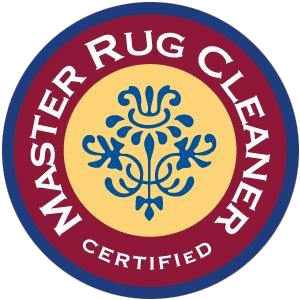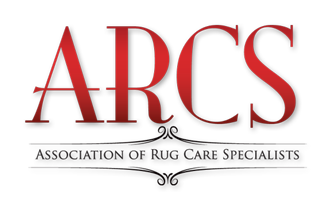I’m Ruth Travis aka the “Rug Lady” and I’m a “Rug-a-holic.” Of course, if you know me, you already know that I’m quite obsessed with or even “addicted to rugs.” However, if you don’t know me let me introduce myself and explain how I became “hooked.”
I’ve been in love with fabric and textiles all my life and actually received a BS degree in Textiles from the University of Tennessee. In 1985 I was hired as the Manager of a Fiberseal franchise in Chattanooga, TN and without taking any classes, started “spot cleaning” client’s furnishings and rugs. I soon learned that to be a good cleaner, I needed some education. In 1988, my partner, Ginger and I started our fiber care service. Not long after, we began our education through the IICRC and eventually I achieved Master Textile cleaner, Master Fire Restorer, and Journeyman Water Restorer status.
In 1995, I opened a retail rug store called The Rug Exchange. That’s when my true obsession with rugs began. After all, you have to have an inventory to have a store. Right? I owned the store for five years and became familiar with all types and styles of rugs.
After selling my share of the cleaning business to my partner in 2001, I shifted my focus to training and instructing others in the fiber care industry. I eventually focused on Rug Cleaning and Color Repair and even wore “rug-themed clothing” when I taught. A part of the rug cleaning course requires the instructor to have at least 60 or more sample rugs to display in the classroom. Of course, that was like adding “fuel for the fire” for me and gave me a legitimate excuse for collecting more rugs!
Over the years, I’ve taken just about every rug-related course available in our industry. And although I’m a very good rug cleaner, each time I took a course, I realized how important rug I.D. was to becoming a great rug cleaner. Knowing that blue weft yarns in Persian rugs can bleed, that Afghan rugs shrink like crazy, that many Pakistani rugs have post-production side cords that can tear off during cleaning, that Stark wire Wilton rugs MUST be blocked because the jute foundation yarns shrink, and spot cleaning chemically washed 90-line Chinese rugs can cause color damage is very important.
I’ve been to Turkey, Australia and England and, of course, brought rugs home from every trip. I buy rugs on E-bay and Esty, and haunt rug stores for my next “treasure.” Even my friends find rugs for me to buy! Insane, huh? My rug collection has grown exponentially!
In 2013 I took the Master Rug Cleaner course and just last year completed the ARCS Certified Rug Specialist . . . a 5-day, very intensive rug ID course. At the suggestion of my instructor Ellen Amirkhan, to help “cram” for the test (which included visual ID of more than 60 rugs) I created “index cards” which included the name and physical description of the rug. I also took photos of the rugs on my phone. Being able to tie the descriptions to the photo was very helpful. The great news! I passed!!!!!
I’m sure by now you’re saying, “What’s your point, Rug Lady?” Well, Confucius said, “True wisdom is knowing what you don't know.”
If you’re in the carpet cleaning business, I’m sure you’ve been asked by more than one client to clean their area rugs. It makes sense that, if you have the chemicals and equipment to clean their furniture or carpet, you can handle cleaning an area rug also, right? Well, maybe . . . maybe not!!!
Can you properly identify the rug? Do you know how it was constructed . . . machine or hand woven, hand-tufted, hand-loomed or machine loomed? Do you know the fiber used in the pile or face, backing system yarns, filler yarns? Is it knotted, hooked, braid or chain stitch? Colorfast? Will it bleed, or dry or wet crock? What’s the dye system or type? What’s the country of origin? What about age?
There are thousands of different types of rugs being purchased by your clients these days. They can be purchased from discount stores, department stores, over the Internet, from catalogs, furniture stores and carpet retailers, as well as the finest Oriental rugs dealers in your city. They can be made of either natural or synthetic fiber or even a combination of both. They can be tufted, hand-knotted or woven. They can be pre-dyed or posted dyed. The fringe may be sewn on or may be an integral part of the rug’s construction. The combination of rug characteristics is endless.
Unfortunately, consumers don’t always know what type of rug they’ve purchased. Being able to identify a rug for your client is quite impressive, as well as informative. Conversely, not knowing what type of rug you’re cleaning can be quite costly. It’s up to you as a professional to know what you’re cleaning and the potential limitations or potential problems the rug may have.
Let’s face it . . . the best way to learn a subject is to really, really study it. So in January, I challenged myself to create rug ID flash cards not only to help improve my rug ID skills but also as a training tool for my staff and technicians. My goal was to create 10 cards each month for a year. Yep, 120 cards! Whew, I had no idea what I’d gotten myself into.
And if collecting rugs wasn’t bad enough, I now dream about rugs . . . the ones I have in my collection . . . and the ones I don’t, but need. I scour the Internet for more rugs to buy and then to justify my purchases, make new flash cards. No doubt, I am truly “addicted” to these beautiful examples of “art for the floor!
To be perfectly honest, to be a good rug cleaner you don’t have to be a collector like I am (although I know quite a few who are), but you do need to have a good working knowledge of rugs. Taking the time to learn your “profession” will not only keep you from ruining a rug but will also give your clients more confidence in your ability, and ultimately make you more money in your business.




